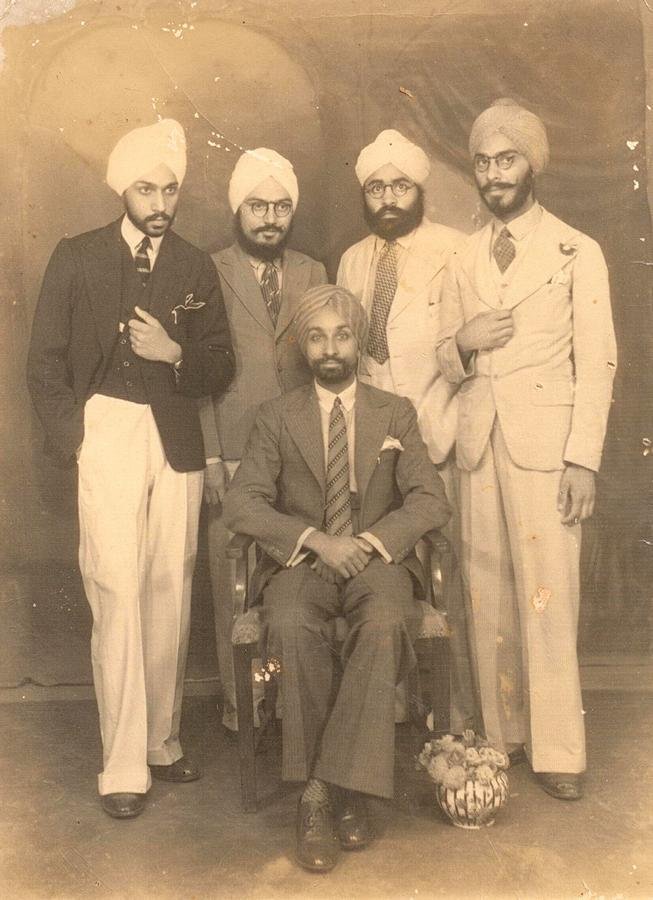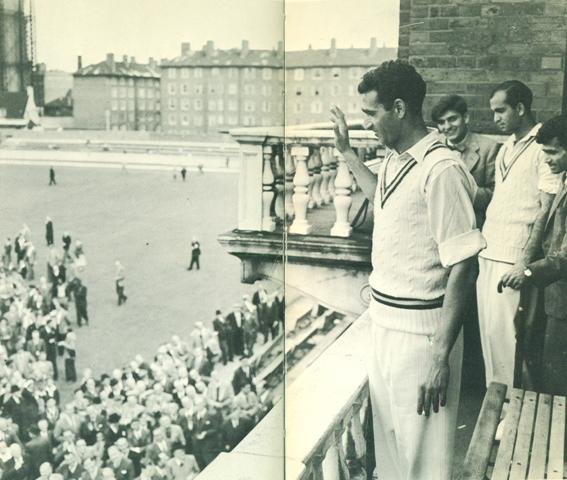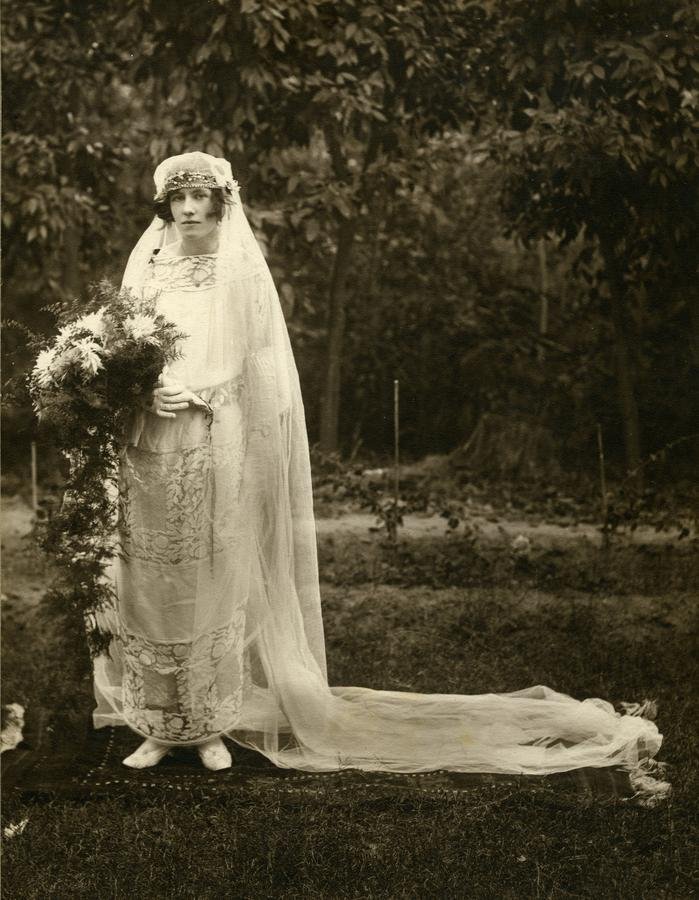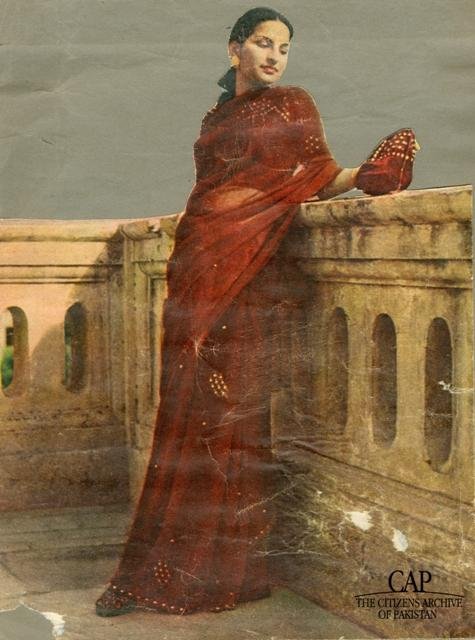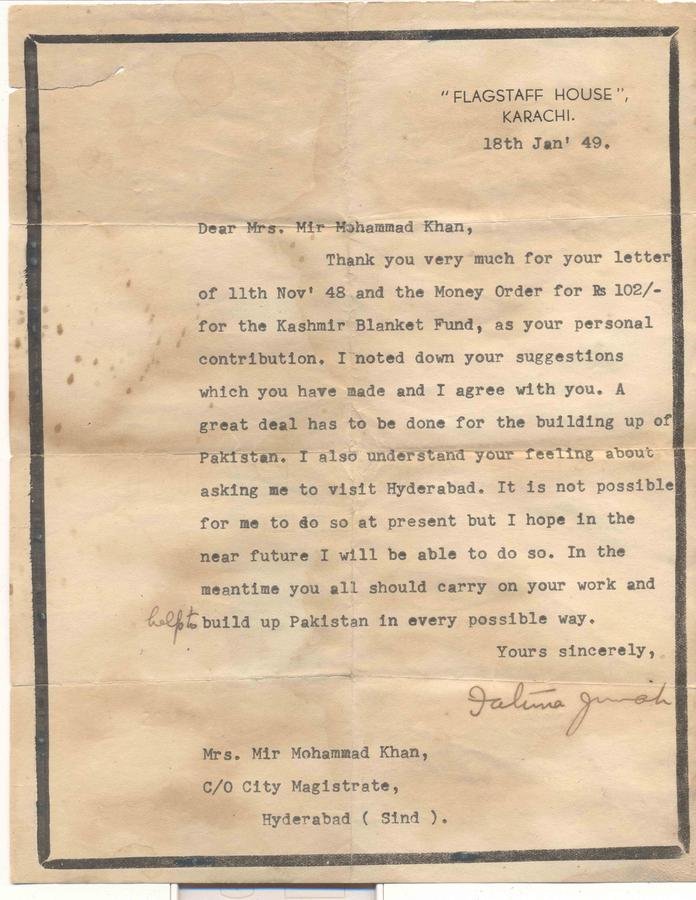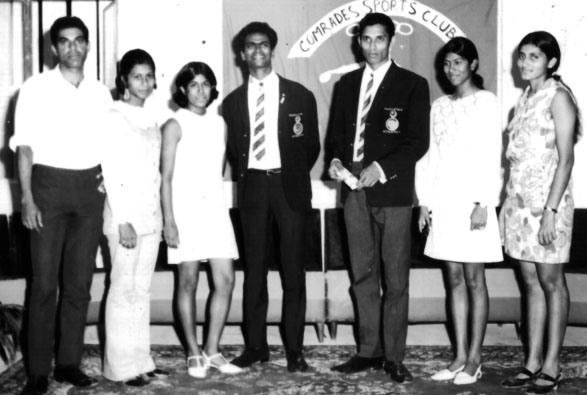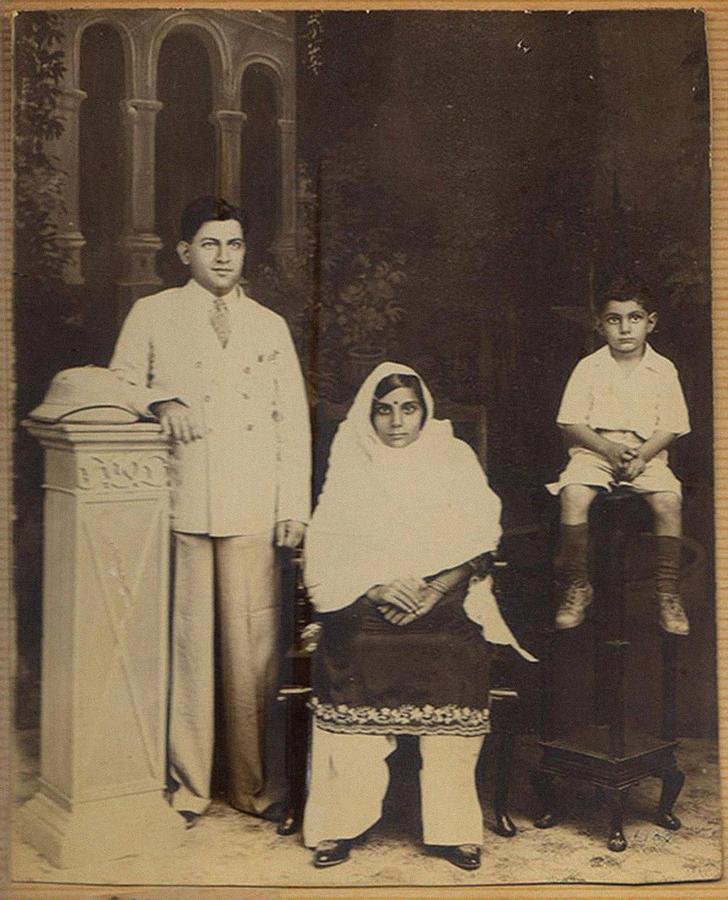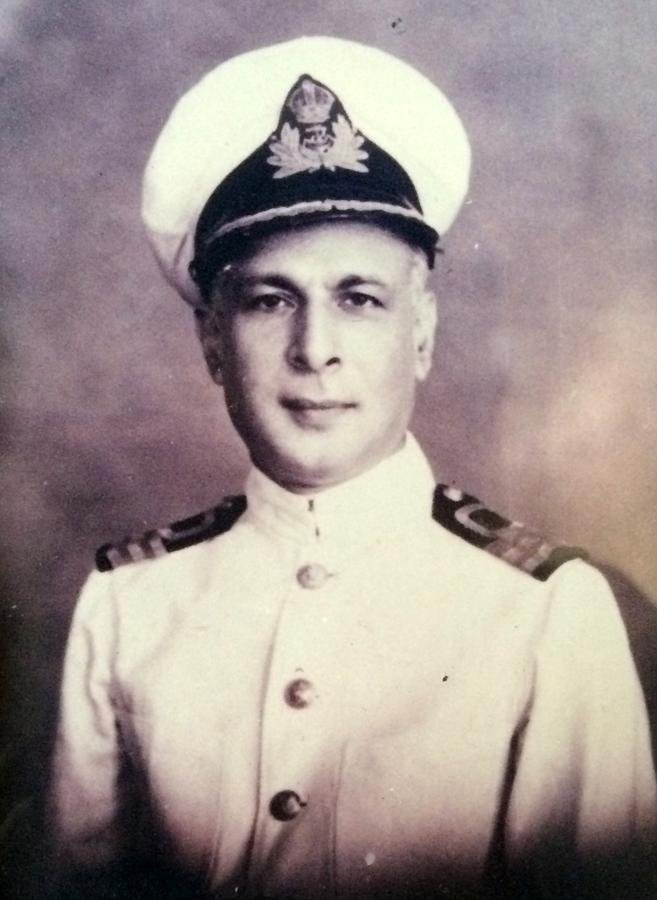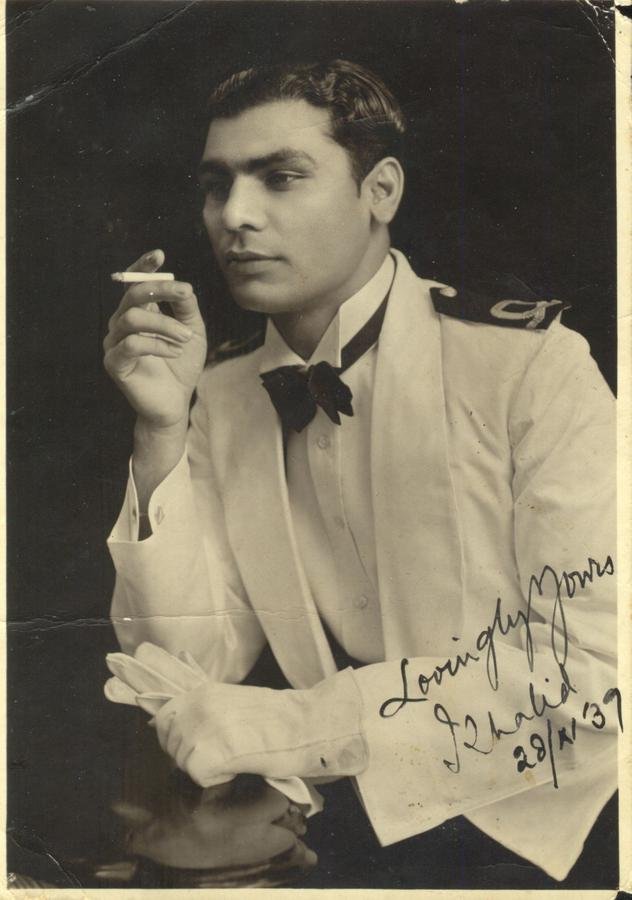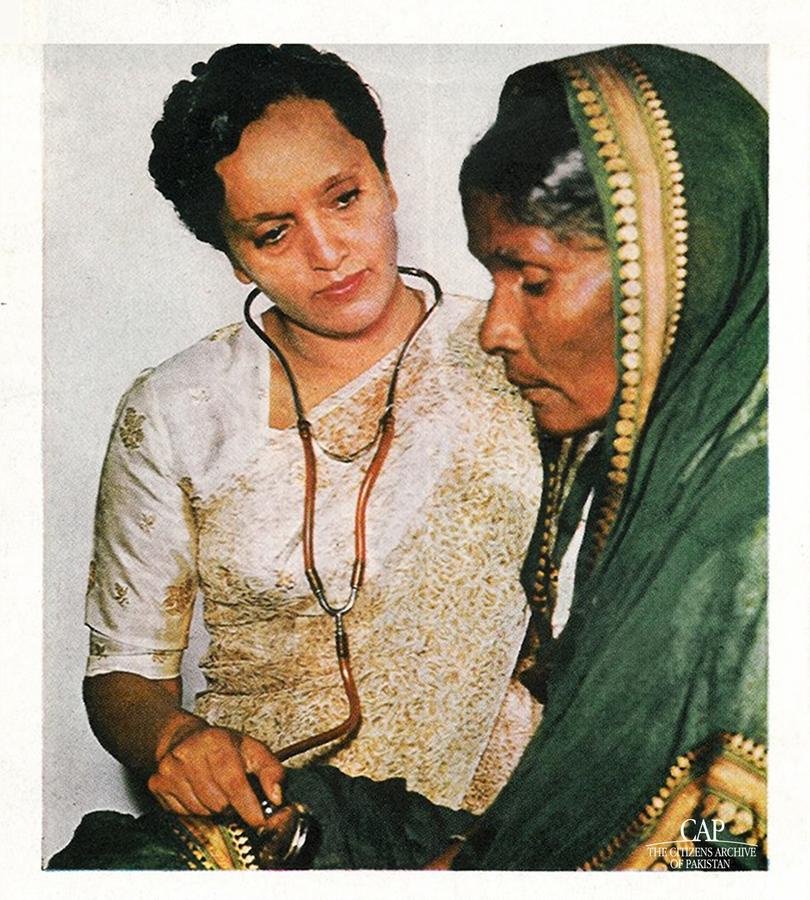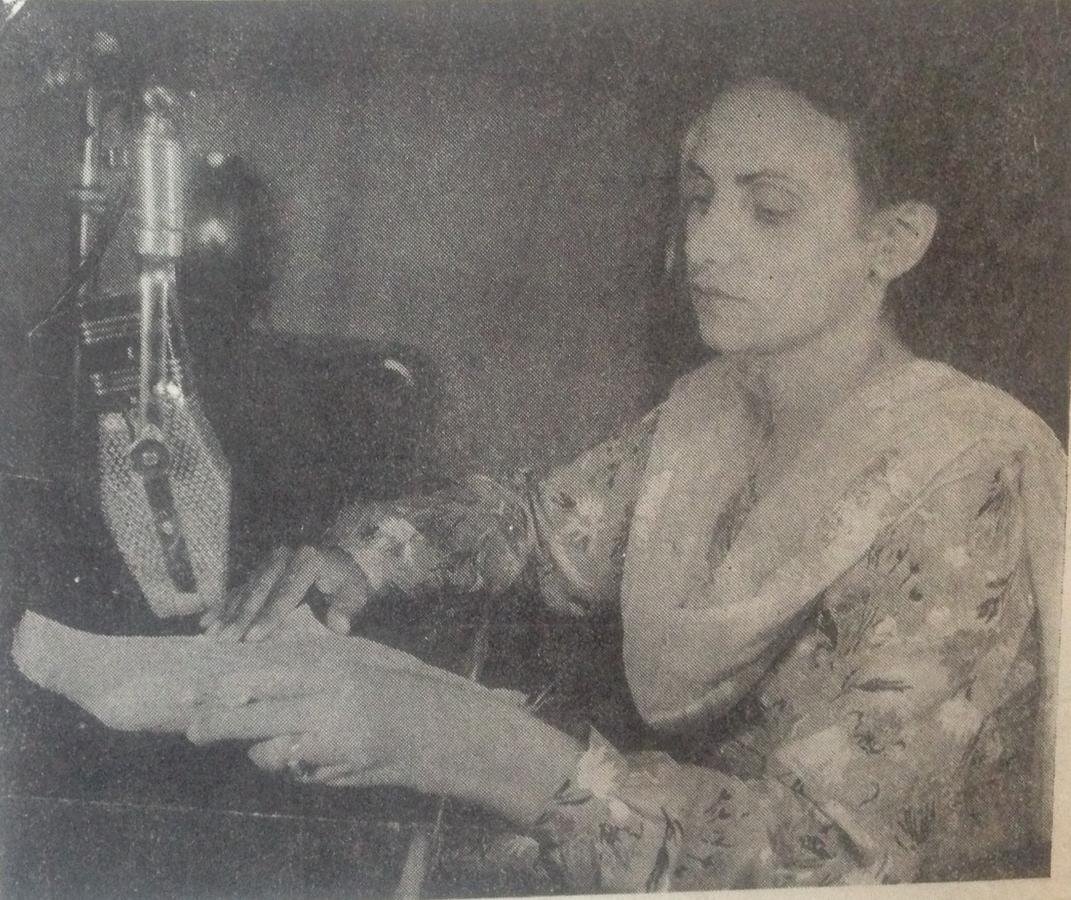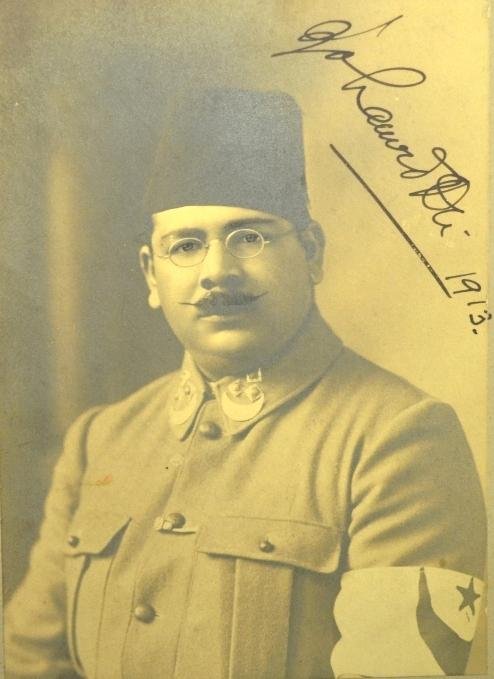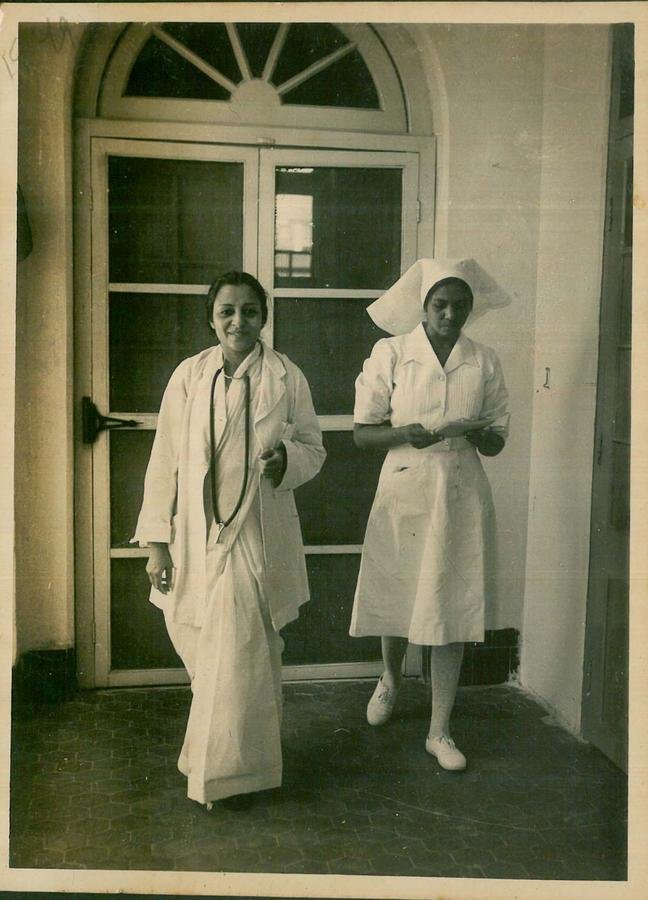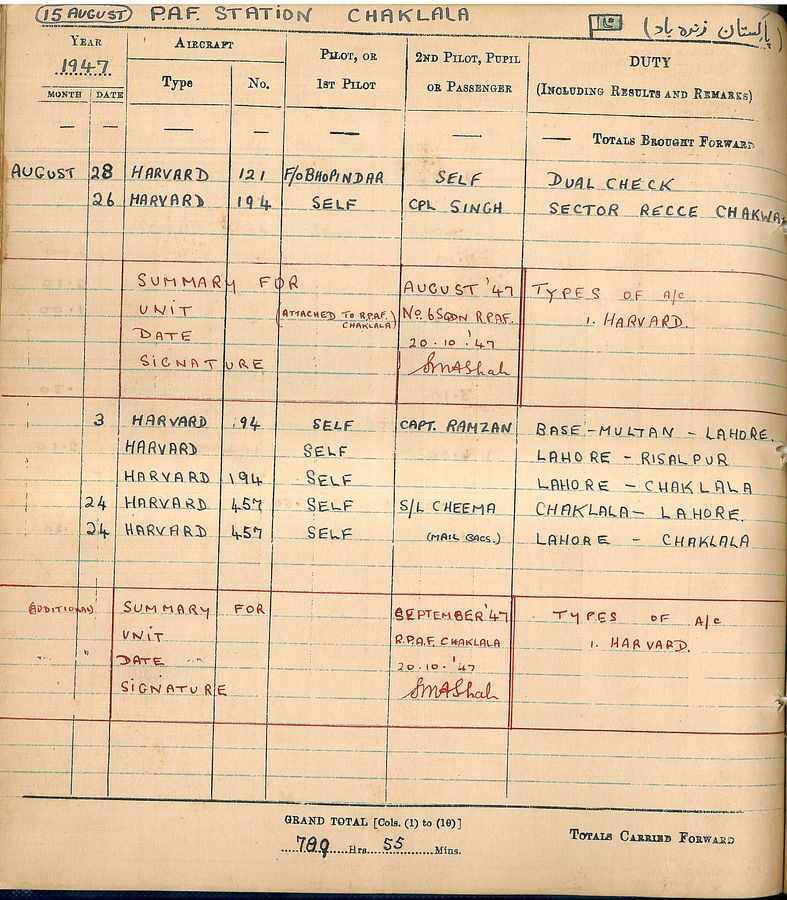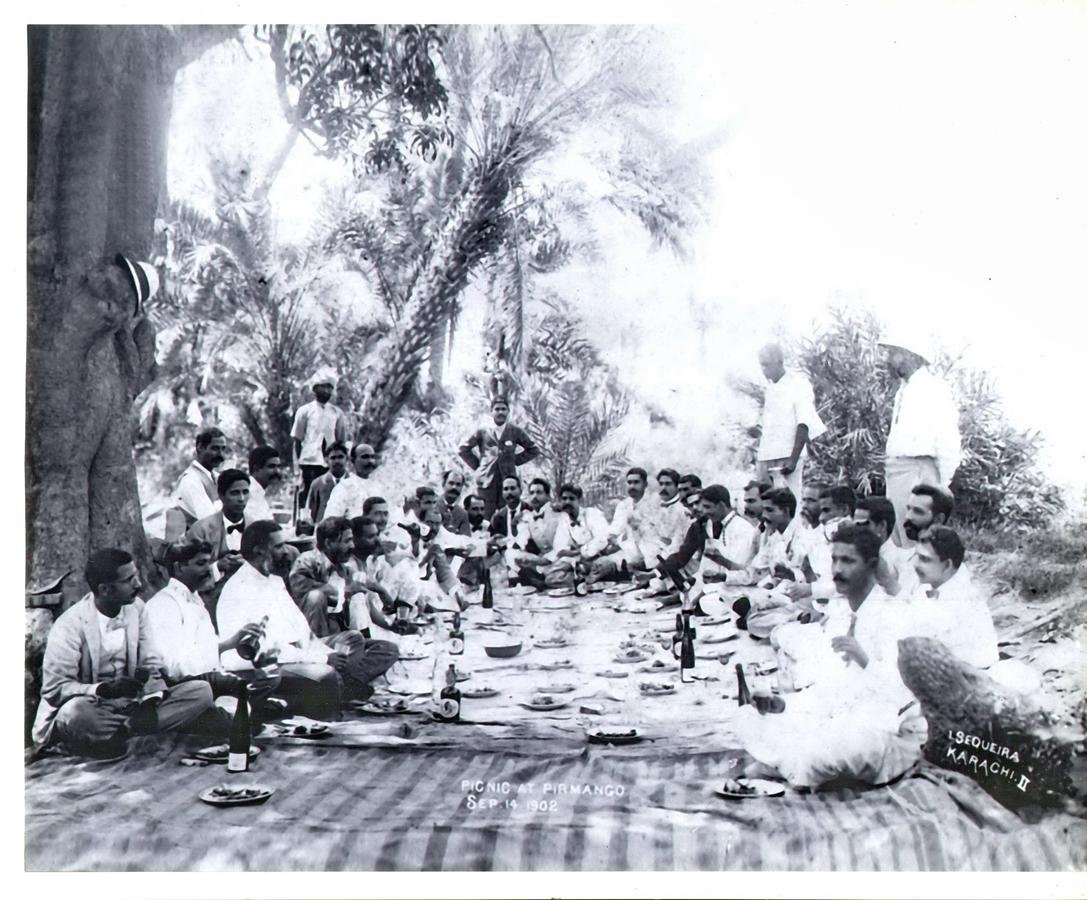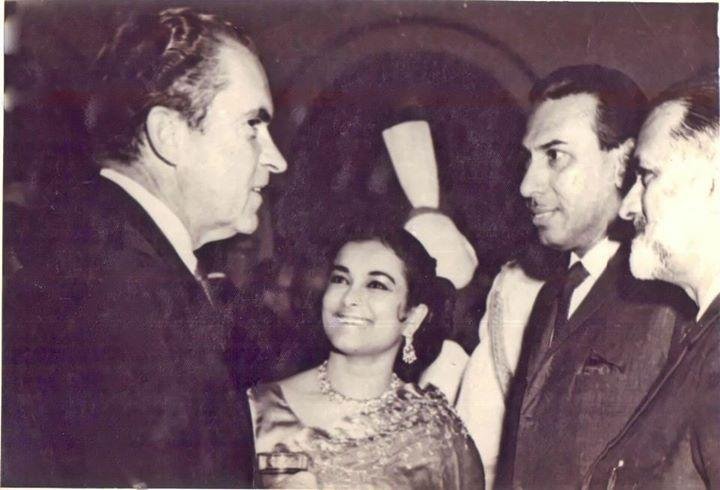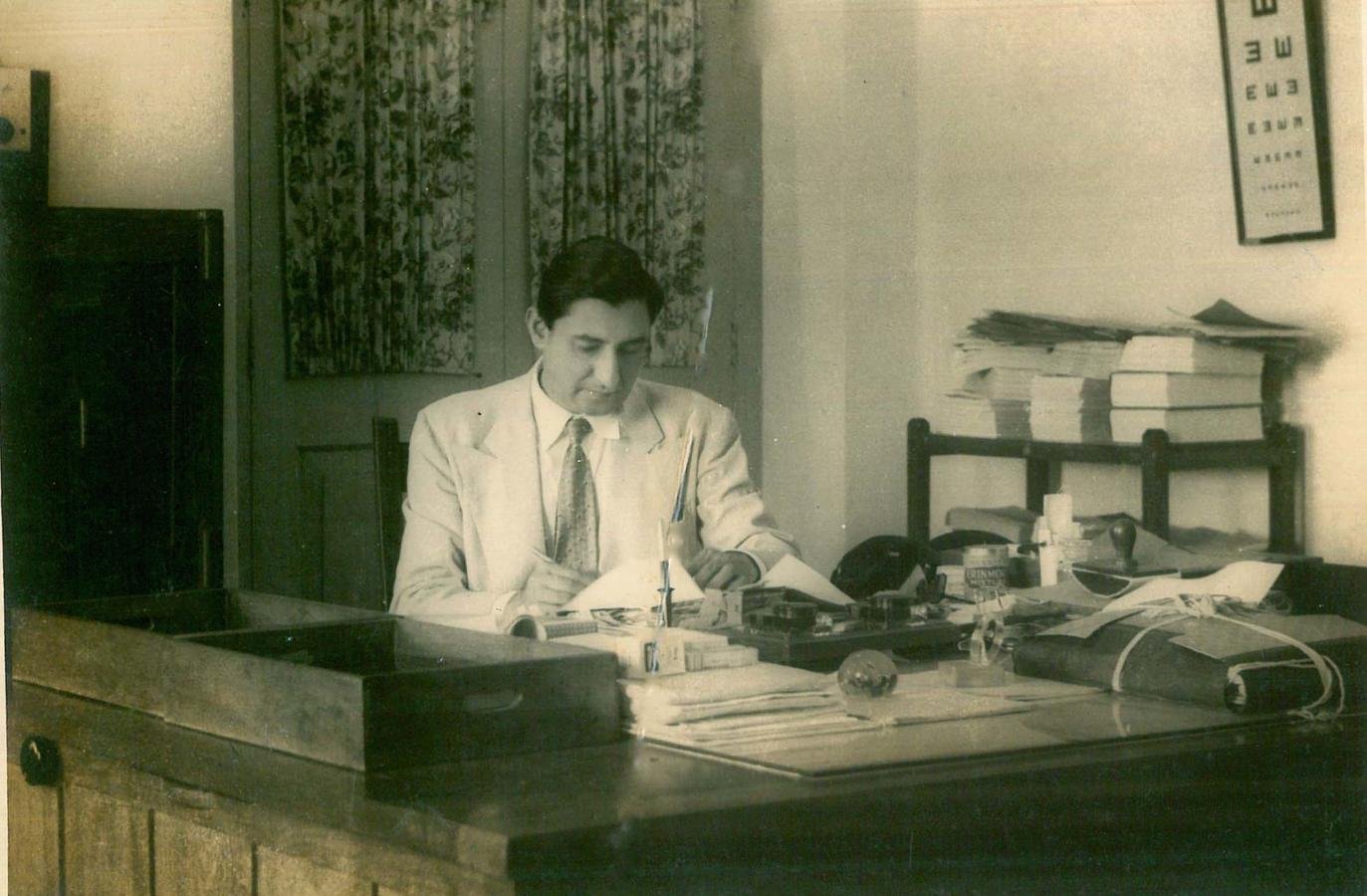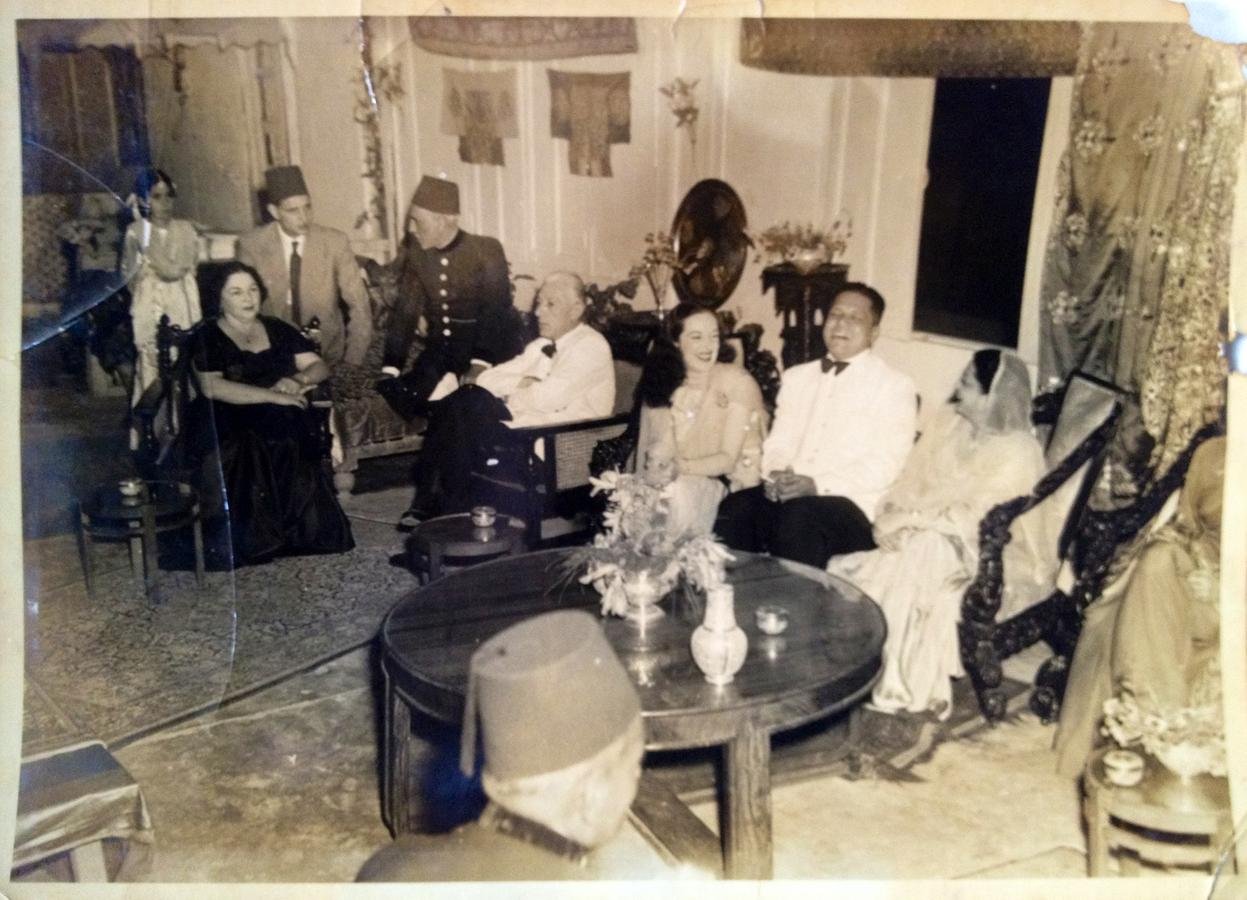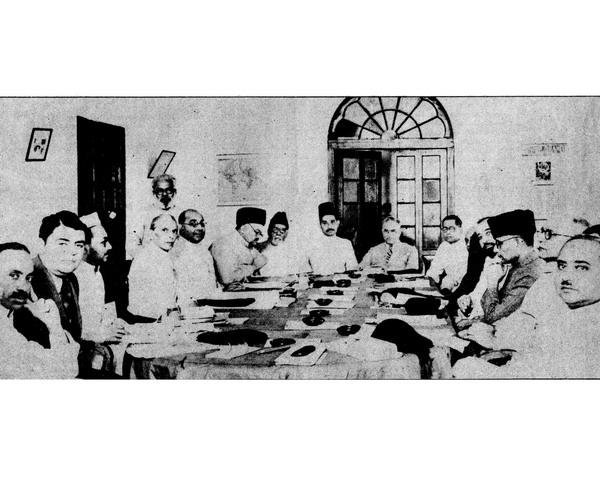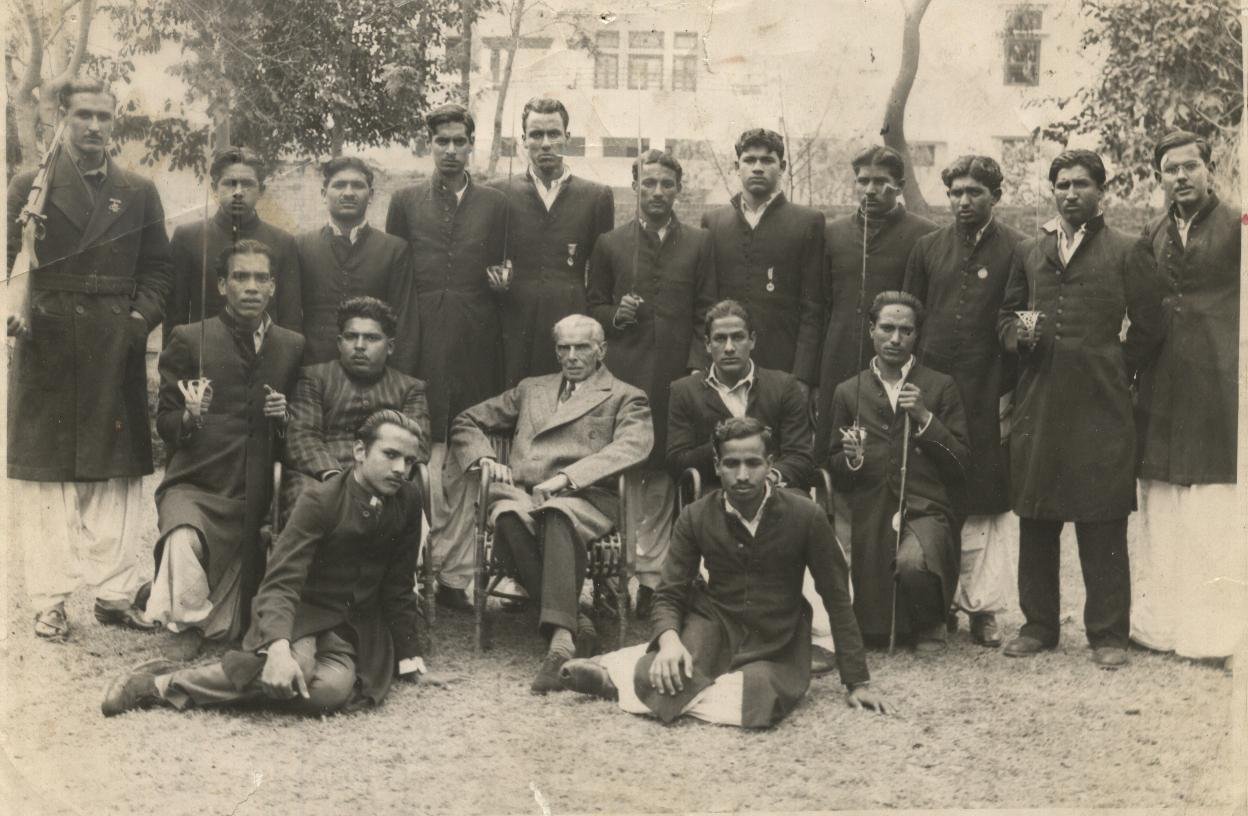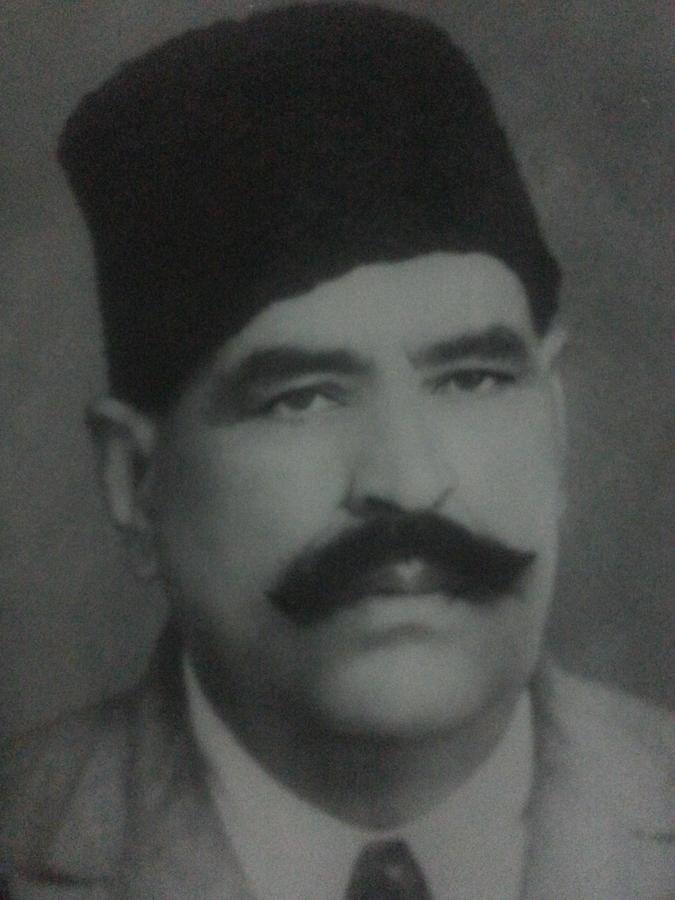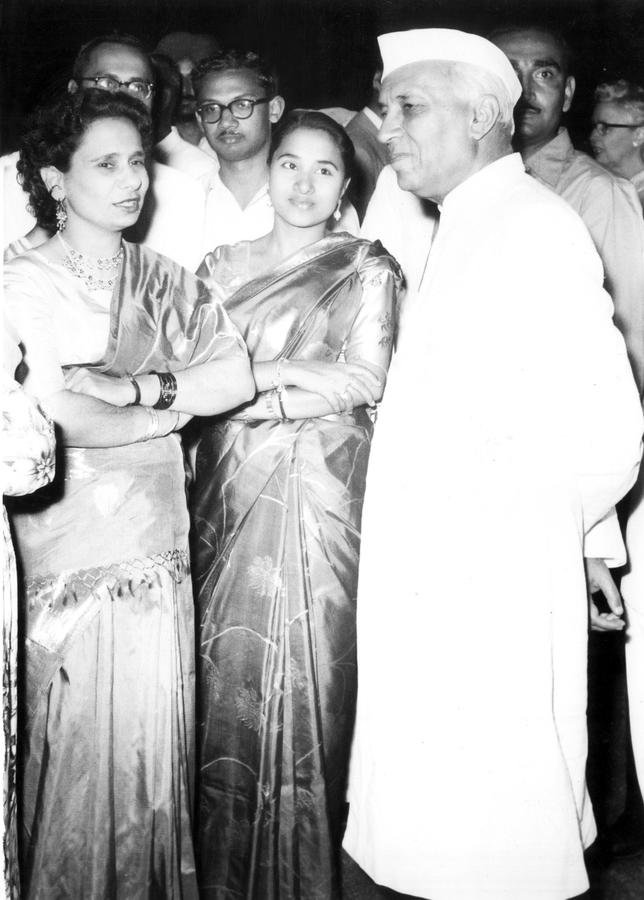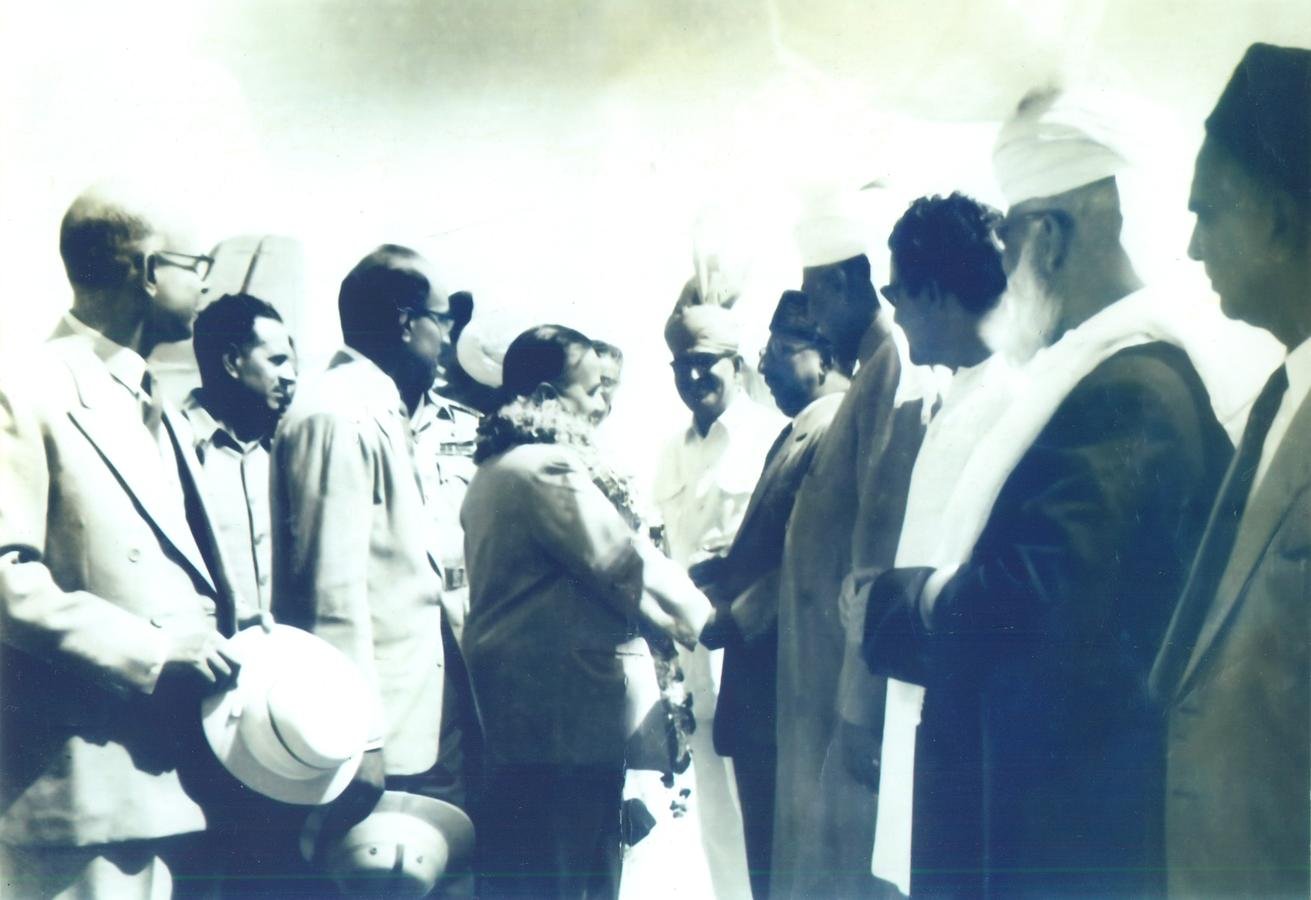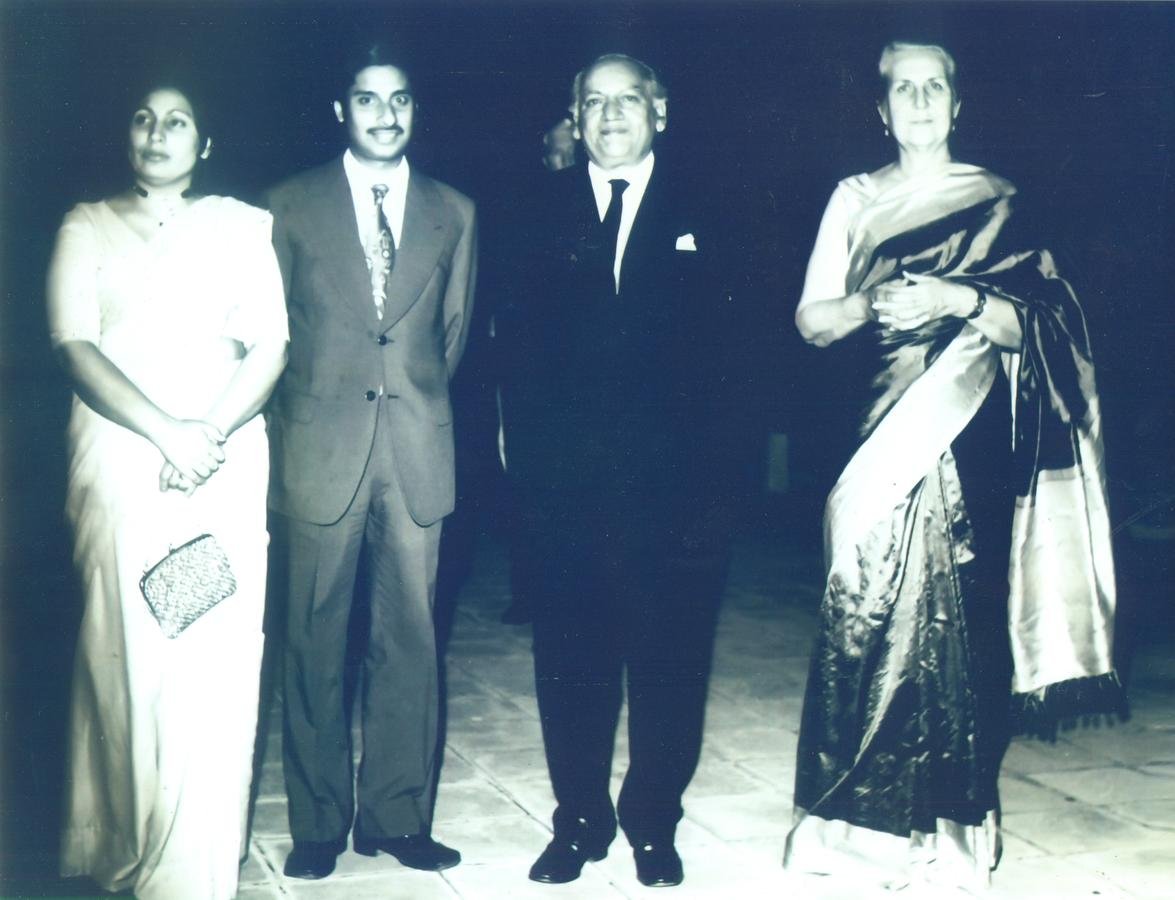Flashback
This August, The Express tribune features photographs of the struggle for independence and Pakistan's formative years.
Begin by following the navigating arrows on the bottom right
Concept: Sanam Maher
For the story behind this picture, and the ones that follow, press the bottom arrow
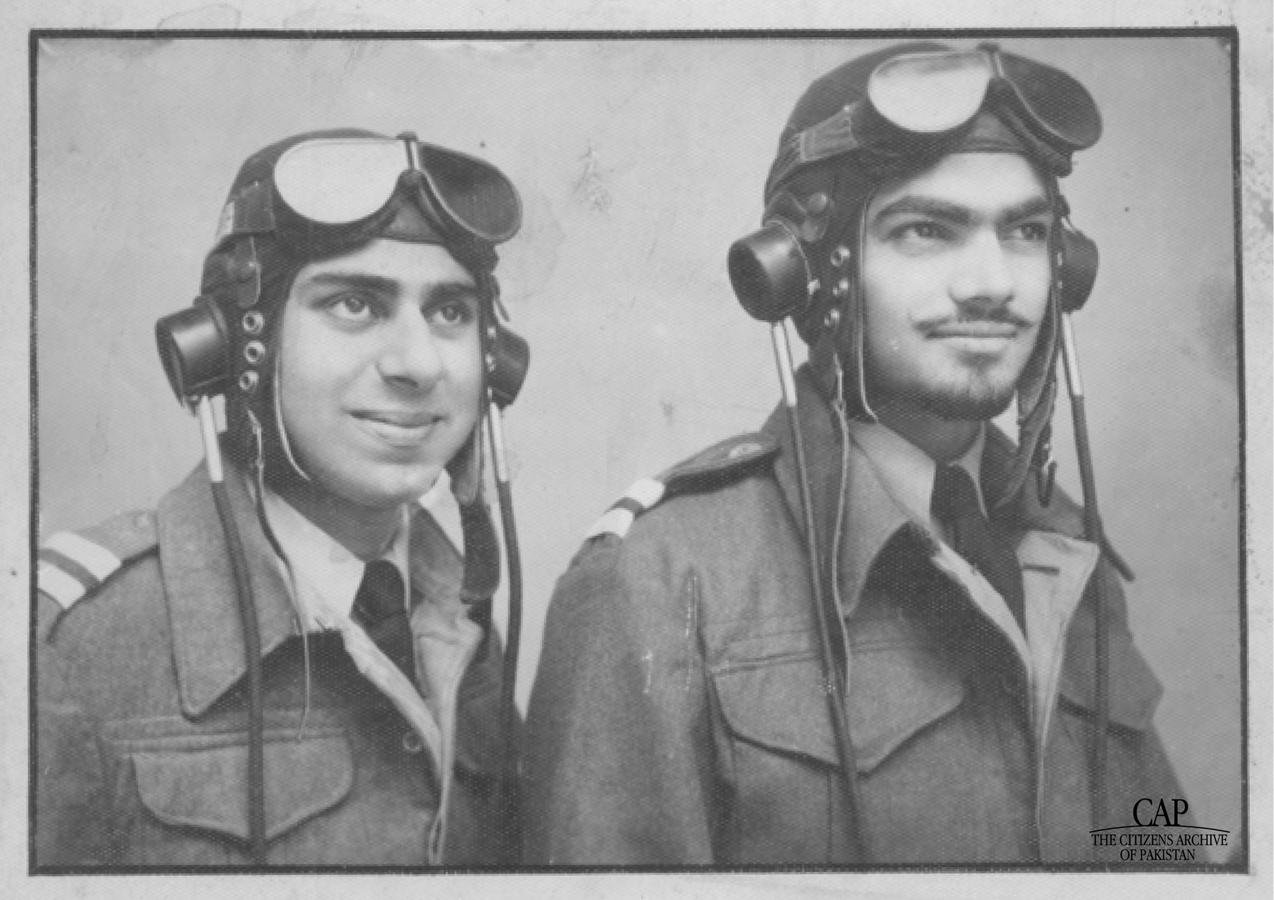
Parvaaz
My nana, Group Captain (retd) Muhammad Waseem Khan, was in the Indian Air Force at the time of Partition. I grew up listening to his stories of dogfights, winning the Clarkson Trophy for Aerobatics and other exciting tales of my country at the time it was being separated into little pieces. I remember sitting by his feet , playing with his twelve cats and hanging onto his every word. From him, I learned what Partition was like. He spoke about how torn people felt when told to leave everything they had and move away. When I moved back to Karachi after spending nearly 10 years in Canada, I had a chance to spend more time with nana and he regaled me with the same stories I had grown up listening to. What was sad was that he was forgetting; some crucial details and stories were just… lost.
Text: Mariam Bilgrami / Photo: Muhammad Waseem Khan/The Citizens Archive of Pakistan
Title
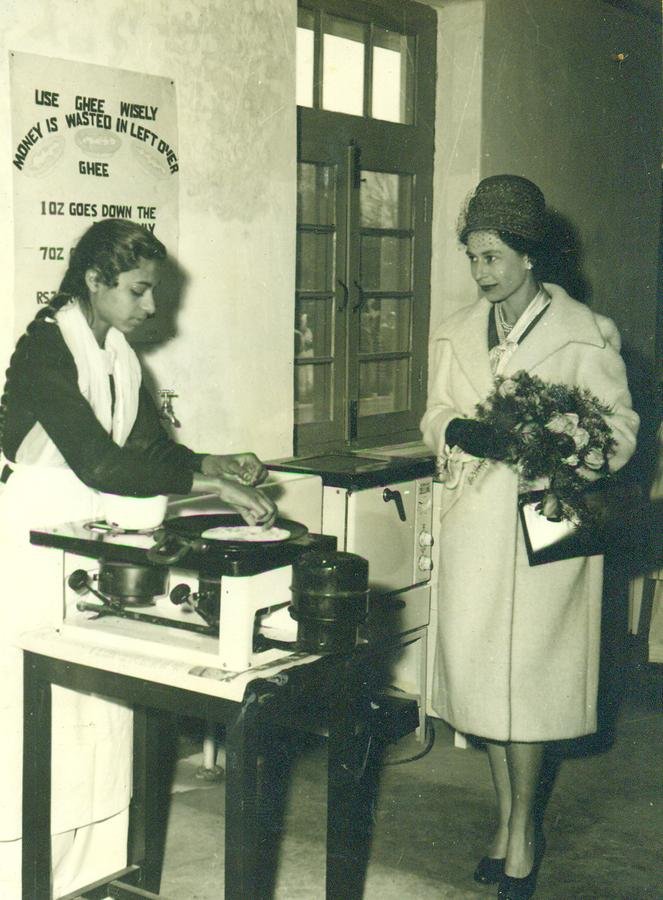
The ROyal Visit
On February 6, 1961, Queen Elizabeth II paid a visit to University of Peshawar with her husband the Duke of Edinburgh. Here, the Queen watches as a student of the Department of Home Economics shows how to make a roti. To the left, a poster reads, “Use ghee wisely. Money is wasted in leftover ghee.” President Ayub Khan, in his speech at the State Banquet on February 1 in Karachi for his royal visitors described Pakistanis’ "admiration" for “the forms and appearances of British institutions, so much so that any modification of their form to suit our own conditions is regarded by some as nothing short of sacrilege.”
Photo: Mir Jaffar Khan Jamali

The wali of swat
In 1917, the Wali of Swat was selected by a grand jirga of elders in Swat and the British granted him formal recognition in 1926. In the princely states, a wali-ahad or heir apparent would be nominated by the ruling nawab or prince of that state. Thus, the first Wali of Swat, Miangul Golshahzada, appointed his son Miangul Jahanzeb as his successor in 1933. The formal ceremony to mark Miangul Jahanzeb’s installation as the Wali was held on 12 December 1949, and was presided over by then-Prime Minister Liaquat Ali Khan. The prime minister’s wife Begum Ra’ana Liaquat Ali Khan also attended the ceremony.
Photo: Miangul Adnan Aurangzeb/The Citizens Archive of Pakistan
The only non-white students
This photograph of my grandfather Dr Preetam Pal Singh with his college mates was taken in 1933 or 1934 at King Edward Medical College in Lahore (now Pakistan). He was around 25 years old. The men in this picture were the only non-white students of their batch. My grandfather was a doctor in the British Army, posted at Manora Island Cantonment, near Karachi, when Partition took place. The family boarded the train to Firozpur and later reached Faridkot, where they spent three nights at the railway platform before the Maharaja of Faridkot employed my grandfather as his personal physician.
Photo and text: Sarah J. Kazi
Victory at the Oval
A.H Kardar acknowledges applause after Pakistan’s Test victory at the Oval in 1954. “Pakistan’s debut in international cricket took place in December 1951, when the least known and the least experienced team became the first side to beat a visiting English team, doing what undivided India had not done in three decades,” states a commemorative book issued by the government on the centenary of Quaid-e-Azam’s birth. “Early hopes were further confirmed when the Pakistan team beat India at Lucknow in October, 1952… The most outstanding achievement came during the England tour in 1954, when for the first time a team on its first tour beat the formidable England XI at the Oval, thus leveling the Test series under totally alien playing conditions.”
Photo & text: Pakistan: Past and Present (1977)
An unknown future in India
This is a photo of my Scottish maternal grandmother, Sydney Gorrie (neé Easterbrook), on her wedding day in December 1923. She and my grandfather were married in a cathedral in Lahore (now Pakistan). She hadn’t seen her fiancé in over a year and had just travelled out by ship from Edinburgh, Scotland to get married. For some time their home was in Lahore (now Pakistan) as my grandfather Robert Gorrie secured a job with the Indian Forestry Service, as a conservator of forests. He worked all over Punjab and the remote foothills of the Himalayas. After Partition, Robert worked for the new Pakistan government for a while.
Photo and text by: Janet McLoed Trotter
Vanity Fair’s
Lady in Red
This photograph of Mrs. Azra Haq, a former member of the Pakistan Women’s National Guard, was taken by a Vogue photographer, Ronnie Chib, who was in Pakistan working on a feature, ‘A Day in a Pakistani Woman’s Life’ in 1950. This particular photograph appeared in Vanity Fair. “Mr. Chib wanted to highlight the beauty and elegance of Pakistani women as he saw it. The photograph was taken near Lahore’s Assembly Chambers on my birthday, 17th May 1950,” Mrs Haq said. “As a refugee from Jalandhar, I only had three sets of clothes,” she recalled. “This red sari was sent to me by my sister-in-law from Bombay especially for the photo-shoot.”
Photo: Azra Haq/The Citizens Archive of Pakistan
A letter
from Ms Jinnah
My mother used to go for training every day as part of the women’s group - the Pakistan Women’s National Guard - that Begum Ra’ana Liaquat Ali Khan was putting together after Partition. A truck would go to the homes of these girls every day in Hyderabad to pick them up for rifle training. My mother met her lifelong best friend, Jameela, at these training sessions. When she became pregnant, she had to stop going for training, but she worked with the All Pakistan Women’s Association until 1975 as their joint secretary in the APWA Industrial Homes in Sukkur. My father Mir Mohammed Mahar, a magistrate at that time, sent the money for the Kashmir Blanket Fund in my mother’s name, as well as a letter to Fatima Jinnah.
Photo: Ayesha Mahar
Text: Najma Rehman
Champions!
The Christian community is known to have contributed immensely to Pakistan in many fields – education, judiciary, armed forces, healthcare, civil and police administration, social welfare, theatre, music and sport. In this photograph from 1974, we can see a historic mix of Pakistan’s national athletic champions. The four women have the distinction of being the ‘Fastest Women in Pakistan’ - from left, Dolores Almeida, Rose D’Lima, Sylvia D’Mello and Sophie Fernandes. The athlete standing fourth from the left is sprinter John Permal, the ‘Fastest Man in Pakistan’ for 10 consecutive years from 1964 to 1974. To Permal’s left is Norman Brinkworth, the 400m Hurdles Champion of Pakistan and on the extreme left is Michael Gomes, the champion high jumper from Karachi.
Photo & text: Menin Rodrigues
The only valuable he saved
On October 2, 1947, my father Anand Bakshi’s family was informed that rioters were headed to their mohalla in Chityian Hattian, Rawalpindi. They had minutes to grab whatever they could carry, before they fled to Delhi via a small Dakota airplane (a bonus, because my great-grandfather was at the time Superintendent of Police of Punjab Prisons, Rawalpindi). In Delhi, my grandfather took stock of what everyone had managed to carry across the border. Upon seeing what my father had carried – family photographs, particularly this one of his mother Sumitra – my grandfather was livid. “How can we survive without our valuables?” he asked. “Money we can earn, but if these photos of her were lost, no amount of money could bring them back for me,” my father replied.
Photo & text: Rakesh Anand Bakshi/Indian Memory Project
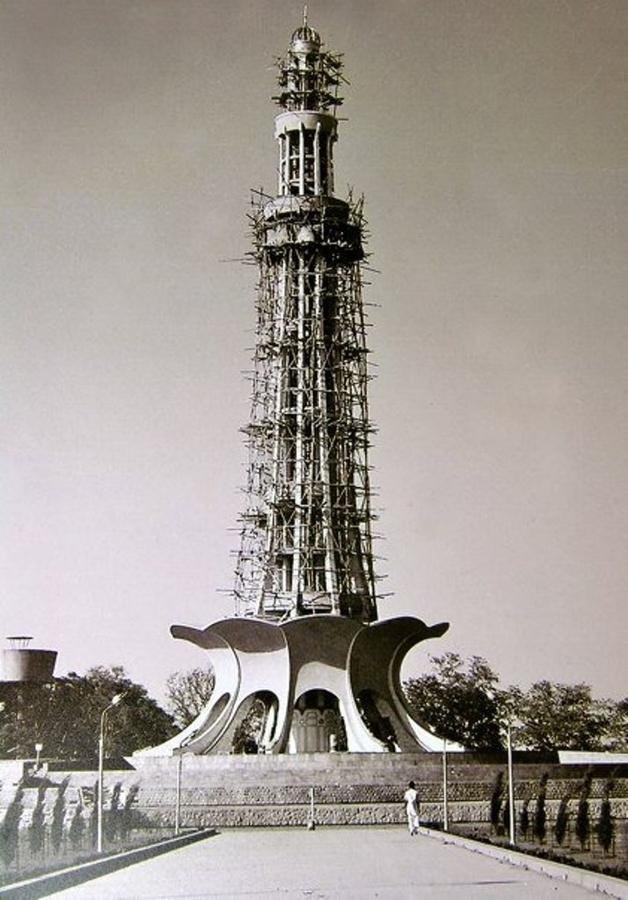
The forgotten architect
Minar-e-Pakistan’s foundation stone was laid on 23 March, 1960, by Governor of West Pakistan Akhtar Hussain in Minto Park (now Iqbal Park). The structure was designed by Naseer ud Din Mira'at Khan, originally from Dagestan, USSR (now Russia). It is said that in 1963, Khan was summoned to President Ayub Khan’s office. The president took out a fountain pen from his pocket and stood it upright on his desk. Build me a monument like this, the president instructed. The towering Minar was completed on 31 October 1968 at an estimated cost of Rs7.5 million. The money was collected by imposing additional tax on cinema and horse racing tickets. Naseer ud Din Mira'at Khan’s name does not appear at the site of the monument.
Photo: Nadeem Omar Tarar

A national airline
Air hostesses for Pakistan International Airlines (PIA) being trained in the PIA Ground Training School’s languages laboratory in Karachi in 1974. In June 1946, Mohammad Ali Jinnah instructed M A Ispahani, a leading industrialist, to set up a national airline. Initially registered as a pilot project in Calcutta, Orient Airways Ltd had at its helm Mr M A Ispahani as Chairman and Air Vice Marshal O K Carter as General Manager. The carrier's base remained in Calcutta and four Douglas DC-3s were purchased in February 1947, with operations commencing on June 4, 1947. In 1955, the government decided to form a state-owned airline and invited Orient Airways to merge with it. The outcome of the merger was the birth of a new airline, through PIAC Ordinance 1955.
Photo & text: Pakistan Pictorial: Two Years of People’s Rule
A personal invitation to Pakistan
My father, Dr Mohammed Ali Mistry, was an eminent physician in Bombay at the time of Partition. He had been appointed as Honorary Surgeon Commander in the Royal Indian Navy and the Chief Medical Officer at the Bombay Port Trust. Before Partition, Quaid-e-Azam Muhammad Ali Jinnah contacted Dr. Mistry and invited him to settle in Pakistan. My father gave up his practice in Bombay and moved to Pakistan to serve the nation. Dr. Mistry looked after the Quaid during his last days, and was with him on his last journey from Ziarat to Karachi. Mr Jinnah was suffering from tuberculosis, and his heavy smoking - fifty cigarettes a day of his favourite brand, Craven A - and punishing work schedule had taken their toll. He died on 11 September 1948 at the age of 71.
Photo & text: Nargis Mistry
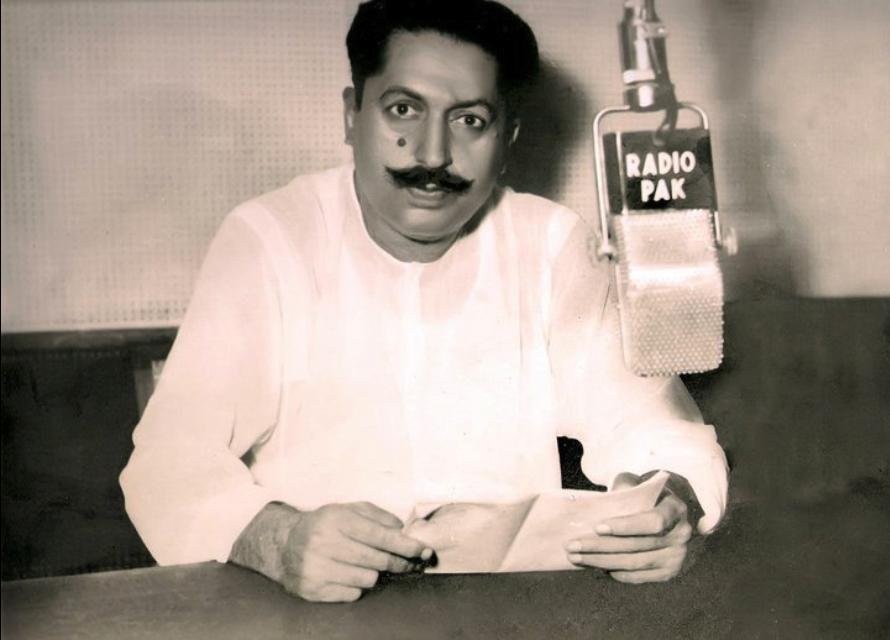
Chief Game Warden of Sindh
This photograph features my grandfather Jamote Syed Muhammad Ali Shah, speaking on Radio Pakistan about hunting and wildlife conservation. He served as the Chief Game Warden of Sindh from 1959-1960. He was very fond of hunting, and often hunted with Pir Pagaro VII. The two were very close because of my grandfather’s assistance during the persecution of the Hur Jamaat by the British administration at the time. He hosted and hunted with visitors to Pakistan such as King Hussein of Jordan and his home in Hyderabad, 17 Civil Lines, was a hub of political activity. A self-educated man, my grandfather taught himself to speak English and how to dress in the British fashion. He also served as an honorary lieutenant colonel in the Pakistan National Guard from 1947-1949.
Photo & text: Reza Ali Shah
The Royal Indian Navy
My grandfather Commodore Khaled Jamil, a member of the Royal Indian Navy, sent this photograph to his family in 1939. I believe he was a lieutenant at the time and this was his officer’s suit – the cigarette is just for style, as my grandfather’s real dream was to be a movie star, according to family stories. He was married a few years after this photograph was taken, in 1942 in Lucknow. At the time of Partition, he opted to join the Pakistan Navy and migrated to Karachi with his wife and three sons. He retired as Commodore and Chief of Staff of the Pakistan Navy in 1956.
Photo & text: Rehan Rafay Jamil
A female physician
This photograph of physician Dr Dilshad Begum appeared in Life magazine’s ‘The World’s Great Religions’ issue in March 1974. Here, she is pictured treating a patient in her private clinic, the Shad Nursing Home, in Karachi. The photograph’s caption noted, “Dr Dilshad, wife of a Pakistani government official, is a leader in the movement to abolish the custom of purdah.”
Photo: Swaleha Alam Shahzada/The Citizens Archive of Pakistan
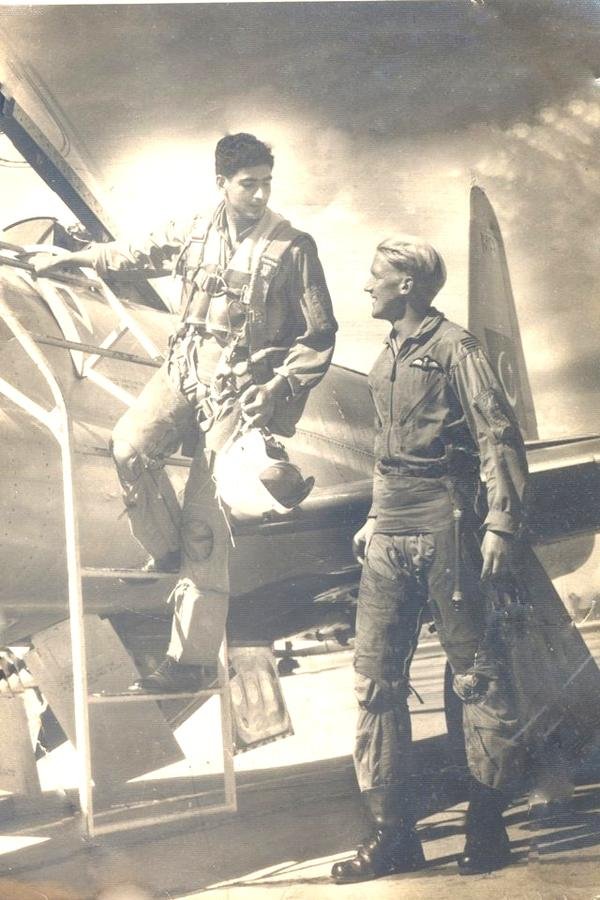
Training Day
This is a photograph from when I was 19 years old, in 1963. The gentleman in the image is my instructor, Flt Lt Chris Salwey, of the Royal Air Force. He was on an exchange posting with the Pakistan Air Force (PAF) and at the time, I had to undergo fighter conversion and operational training on the F-86 Sabre. In those days, basic flying training at PAF Academy,Risalpur used to be on a piston engine-driven propeller airplane called the T-6G. After graduation we had to undergo conversion training on jet engined aircraft on the T-33. I went on to have a forty year-career in the Air Force and I am a veteran of the 1965 war. I served as Defense Attache in the United States of America from 1988-1991 and I retired as an Air Commodore.
Photo & text: Air Commodore Nasir M Butt
The professional Muslim woman
After earning a Masters’ degree in Economics from Government College Lahore in 1938, my dadi Shameem Saadat initiated her career as Assistant Registrar Cooperative Societies. This was the time when the Lord Darling Commission on Rural Debt had raised consciousness about the crushing burden of rural debt in India at the hands of loan sharks. Shameem travelled deep into villages across the country, organised social groups, and empowered women to form rotating saving societies . In 1954, she was selected as Assistant Director Industries, in charge of West Pakistan's women's vocational institutions. Shameem was deputed to host visitors like Helen Keller, Farah Diba, and Jacqueline Kennedy, creating a positive image of a professional Muslim woman engaged in the service of her country.
Photo & text: Shayma Owaise Saadat
The cause of independence
This signed photograph of Maulana Muhammad Ali, one of the founders of the All-India Muslim League, was presented by Maulana Jauhar to Sardar Mohammad Ashraf Khan Popalzai in 1913. Popalzai had served as governor of Kashmir and he had spent time with Maulana Jauhar at Aligarh University. After graduating from Aligarh, Maulana Jauhar went on to Lincoln College Oxford, England, in 1898 to study modern history. He launched an English weekly, Comrade, in 1911 and an Urdu weekly, Hamdard, in 1913. Elected president of the All India Muslim League in 1918, he continued to champion the cause of independence until 1931, when he died in London. He was buried in Jerusalem as he had wished.
Photo: Sardar Shoukat Popalzai
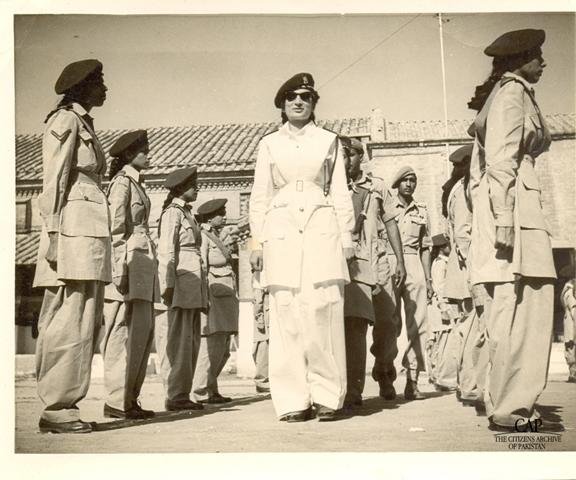
Pakistan Women’s National Guard
The Pakistan Women’s National Guard (PWNG) and Pakistan Women’s Naval Reserve were volunteer organisations formed by Begum Ra’ana Liaquat Ali Khan in 1949. Begum Ra’ana was the Chief Controller of both, with the rank of a Brigadier. “Everyone from every walk of life came forward to join the PWNG,‟ according to Ms Abeeda Abidi, a member of the PWNG interviewed by The Citizens Archive of Pakistan. “We encouraged women to join, telling them to come and join this force which is going to help build Pakistan.” Women were encouraged to take up responsibilities in administering first aid, organizing food distribution, dealing with health problems, epidemics and clothing, and above all, in providing moral and emotional support.
Photo: Abeeda Abidi/The Citizens Archive of Pakistan
Radio Pakistan
This photograph features a play in broadcast at Radio Pakistan in 1977. “Radio Pakistan has come a long way since its first broadcast at midnight between 14 and 15 August 1947,” states a commemorative book issued by the government on the centenary of Quaid-e-Azam’s birth. “Inheriting a 5KW transmitted at Lahore and a 10KW transmitter at Peshawar, the Pakistan Broadcasting Service began with three transmissions a day, each station on the air for 18 hours. In 1976, eight stations were broadcasting 160 hours daily in Home Service and 30 hours in External Services (broadcast in 16 languages including Arabic, Persian, Dari, French).The transistor boom of the 1960s resulted in about seven million licensed radio receiver sets with an average audience of four or five people each.”
Photo & text: Pakistan: Past and Present (1977)
A Fellow of the Royal College of Surgeons
Dr Mahmuda Ghulam Mohamed, was a leading gynecologist in Karachi. She was Medical Superintendent of Lady Dufferin Hospital where this photo was taken, from the 1940s until her death in 1958, aged 47. Under her direction, the Institute of Nursing was added to the hospital, and it became Pakistan’s pre-eminent maternity hospital. After training at Lady Hardinge Medical College, Delhi, and King Edward Medical College, Lahore, she went to Edinburgh (Scotland) for her postgraduate exams and in July 1939, she became the first Muslim woman doctor from pre-partition India to be elected a Fellow of the Royal College of Surgeons.
Photo & text: Yasmine Jamil & Nilofar Minhas
Pakistan Zindabad
This is a page from my father Air Commodore Syed Mansur Ahmed Shah’s flying log book – the date is August 15, 1947 and you can spot a small Pakistani flag on the right, with the words ‘Pakistan Zindabad’. Known to colleagues as ‘Polly Shah’, he joined the Indian Air Force in 1944 and opted for the Pakistan Air Force at Partition. Described by fellow pilots as the ‘opening batsman’ of the 1948 war over Kashmir, he did some pinpoint para-dropping over very difficult terrain in Kashmir, flying a four-engine Halifax bomber. He was an important member of the cavalcade which formed the nucleus of PAF in its embryonic phase under Air Marshal Asghar Khan’s command. He passed away last year at the age of 87.
Photo & text: Daud Shah
The Goans in Pakistan
Around 1900, a young bachelor named Celeriano deSouza, my grandfather, migrated for better economic opportunities from the Portuguese colony of Goa to the British colony India’s newest town, Karachi (population at that time:16,000). The Goans contributed significantly to the development of the town and other areas that became Pakistan, in schools, hospitals, professional services, judiciary, and public and government service. Manuel Misquita, a Goan, was Mayor of Karachi 1945 to 1946. Here, my grandfather is pictured in 1902 (in a suit, third from left) at a community picnic at Pir Mango (Manghopir) on the outskirts of Karachi.
Photo & text: Roland deSouza
A freedom fighter and a scholar
This is an image of my grandfather Allama Ala ud din Siddique (1907-1977) taken with President Nixon on August 1, 1969 at Governor House Lahore, where a dinner was held in Nixon’s honour by President Yahya Khan (my grandfather is on the extreme right). A freedom fighter, religious scholar, and educationalist who took an active part in the creation of Pakistan, my grandfather served as General Secretary of Punjab Muslim League in 1946-1947. He established the Department of Islamic Studies and Punjabi at Punjab University Lahore, the first of its kind in Pakistan. As chairman of the Islamic Ideological Council (1964), the curriculum for Islamic studies was formed under his supervision and his lectures were among the first ones broadcast on Radio Pakistan and PTV at the time.
Photo & text: Wajiha Salman
The college’s longest serving principal
This photo from the 1950s shows my grandfather, Professor Mahmud Ali Shah, in his office at Dow Medical College (DMC) where he was its longest serving principal. He was a member of DMC’s founding team and his setting up of its anatomy museum with his wife, Dr Mubarika Shah, enabled DMC to be accredited. His research was widely published. He completed his fellowship in ophthalmology from Harvard University in 1952. In the 1980s he helped establish LRBT’s hospitals and designed their postgraduate program. From 1965 he was honorary consultant ophthalmologist to the Navy, becoming honorary Surgeon Rear Admiral in 1984.
Photo & text: Zara Jamil
A writer, a patriot, a diplomat’s wife
My mother, the writer, patriot and diplomat’s wife, Ruhafza Hyder, giving an interview in 1949 to NBC Radio in Washington, DC. She talked about the new state of Pakistan and its unique identity, separate from that of India. Next to her is her son Tariq Osman who went on to become a diplomat and ambassador himself. My mother had been educated at Lahore College for Women and had a keen interest in writing, encouraged by her mother. She won a writing prize from Phool magazine for children at the age of six. She was one of the earliest Muslim women to get both a BA in Urdu and a Munshi Fazal degree in Persian. My father Sajjad was posted as second secretary in Washington from 1949 to 1951, after serving as staff officer to our first Foreign Secretary in the Foreign Office, in Karachi.
Photo & text: Rehana Hyder
Pakistan’s second birth anniversary
Mirza Abol Hassan Ispahani, a trusted lieutenant of the Quaid and a tireless worker for Pakistan's independence, was appointed Pakistan's first ambassador to Washington DC from 1947 to 1952. Here, he is pictured cutting a cake decorated with the Pakistan flag on August 14th 1949 at the Pakistani embassy at an Independence Day reception for officials and staff and their families. Standing next to him is my mother Ruhafza Hyder. To her left is Dr Riffat Rasheed, her old friend from Model Town, Lahore, then a student at Columbia University. Dr Rasheed went on to become a distinguished professor in Pakistan. She was the sister of Brigadier Shami, who gave his life in service of the country during the 1965 war.
Photo & text: Rehana Hyder
The youngest social worker
My mother, Bilquis Shustri, at the age of seven, was the youngest social worker of the Red Cross in Pakistan. She is pictured here at a Red Cross charity event (standing on the extreme left) at a gathering at the Lalezar restaurant in Karachi. This photo was taken in 1950 or 1951. Begum Liaquat Ali Khan can be spotted sitting on the extreme right.
Photo: Bilquis ShustriText: Ali Rez
The All India Muslim League
This is a picture of the All India Muslim League Subject Committee meeting in Lahore on March 22, 1940, to discuss the agenda and draft of the Lahore Resolution, which was to be put up for approval by the Annual General Body on March 23, 1940. The meeting was chaired by Quaid- e -Azam Mohammed Ali Jinnah and those in attendance were Liaquat Ali Khan, Huseyn Shaheed Suhrawardy, Maulana Zafar Ali Khan, Nawab Ismail, Malik Barkat Ali and Haji Abdullah Haroon. The Executive Committee of the All India Muslim League consisted of 21 members nominated by the party’s president. They reported to the All India Muslim League Council, which consisted of 500 members elected from all over India. The Council reported to the All India Muslim League Annual Session, which was the supreme body consisting of 5,000 delegates from all over India.
Photo & text: Pakistan: Ali Malik Tariq
Muslim
Students Federation
Mr Jinnah is pictured here with his student bodyguards from the Muslim Students Federation. This contingent of students was led by my grandfather MZ Butt, who served the Quaid from 1946 to 1948. My grandfather retired as Deputy Chief of Air Staff, PAF.
This contingent comprised of many notable figures including Sartaj Aziz (current Foreign Affairs advisor to the PM), Hakeem Qarshi (founder of Qarshi industries) and Mian Salahuddin (popularly known as Mian Salli, renowned politcian and Allama Iqbal's son-in-law).
Photo & text: Hamza Butt
Rehmanabad’s Khan Bahadur
Late Khan Bahadur Raja Abdul Rehman, alias Khan Sahib, was the head of the Abbasi family of Nagri Totial, Abbottabad district. He was born in 1876 and died on September 26, 1946. He was the oldest of five brothers, all of whom remained in national politics. After retiring from the British government service, he entered politics. He was elected in frontier assemblies thrice before the creation of Pakistan and also held office of provincial minister in1945. He was a close friend of Quaid-e-Azam Mohammad Ali Jinnah. Khan represented Hazaras in the famous Minto Park Pakistan resolution on March 23, 1940. Rehmanabad, a town in Rawalpindi, have been named after him.
Text & photo: Agha Jan
A reception with Pundit Nehru
My Father Sajjad Hyder, a young India Army officer who had seen war service commanding an intelligence unit in South East Asia, was selected for the Indian Foreign Service before Partition by Pundit Nehru who was at that time Prime Minister and also Foreign Minister of British India. He was under training at Metcalf House in New Delhi when Pakistan became independent and he immediately joined the new Pakistan High Commission in Delhi set up in Begum Liaqat Ali's house, Gul e Rana, which subsequently became the Embassy Residence. This reception in the mid-1950s was held during my parents' second posting in Delhi when my Father was the Deputy High Commissioner. They returned to New Delhi for a third posting when he was our High Commissioner there in the eventful period of 1968-1971.Text & photo: Rehana Hyder
An Official Reception
My father Ch Maula Dad Chowhan, the first Mayor of Rawalpindi after Partition, is seen receiving Mr Hussain Shaheed Suharwardy, the then prime minister, at the Chaklala Airport. One can also glimpse Gen Muhammad Ayub Khan behind him, who was the C-in-C.
Text and Photo: Chief Justice of Gambia Ali Nawaz Chowhan
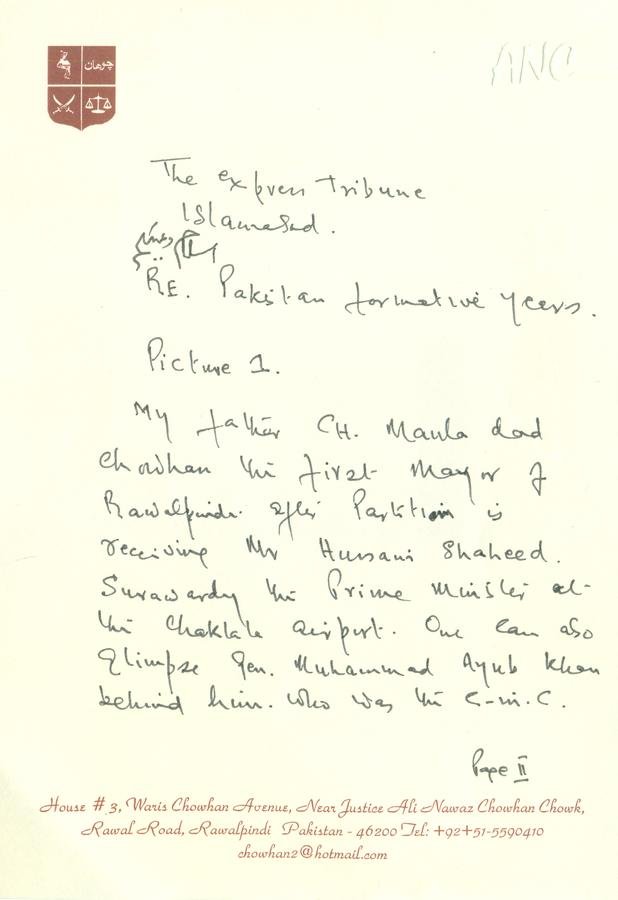
An Evening With Faiz
Mr Faiz Ahmed Faiz with his wife at my wedding reception
Text and Photo:
Chief Justice of Gambia Ali Nawaz Chowhan
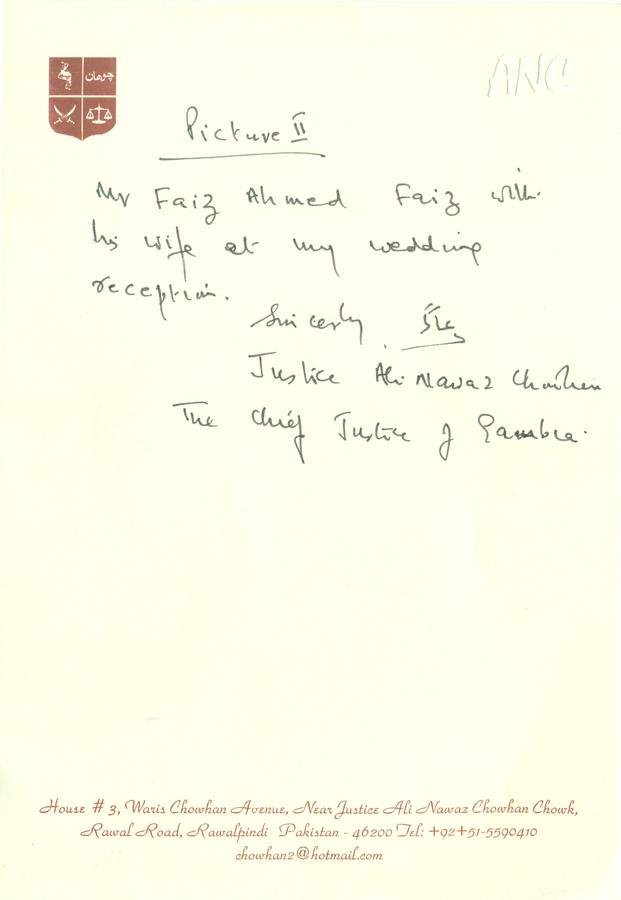
deck
By shayannav
deck
- 17,134
